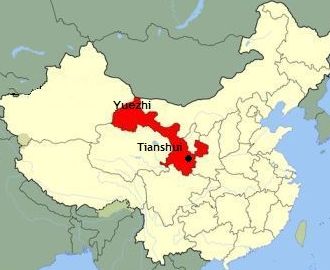
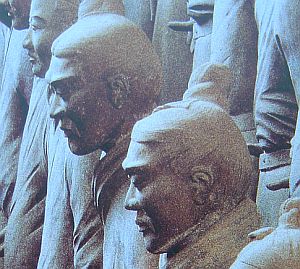
|
Home DH-Debate 7. Similarities in Construction Style 9. Tarim I |
| 1. Introduction | 2. Qin Shi Huang's Grave |
| 3. Qin's Culture | 4. Early History |
| 5. Qin Dynasty | 6. Literature |
There are a number of striking historical similarities between East and West, between China and Scandinavia.
I think about the dragon heads on the bow of the ships, the buildings with colonnades all around and animal figures in the gable-ends and roof edges,
the elegant and lively heraldic figures and some nearly identical Danish and Chinese words with same meaning.
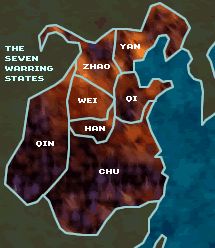
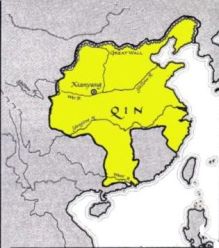
Left: The original Chinese states in the period of the warring states from 500 - 221 BC.
Right: Qin Dynasty China 221 - 207 BC.
The most obvious and likely explanation for these similarities is that both Scandinavia and China have received them from the same source far back in history. It is obvious that several peoples of the migration age have brought their culture with them from the Centre of Asia to Europe.
The Qin people came from the western border regions of the Zhou Dynasty China, where they had lived in close contact with the barbarian "Rong" tribes. "Rong" was the generic term for non-Chinese tribes around China of that time.


|
Left: Tianshui - Qin's original homeland.
Right: Some of the Terra Cotta soldiers look quite European, note the eyebrows. However, they are exceptions, most of them look quite "Asian" except that they are quite tall. Photo "Awakened Qin's Terra-Cotta Army. Shaanxi Travel & Tourism Press.
One can imagine that the term "Rong" has included the Qiang and Di tribes, which later in history appeared in these lands. By this time, the Yuezhi people, who also lived in the Western regions, had already been selling jade to China for hundreds of years. The term "Rong" does not seem to include the enemies to the north, as these are always mentioned with their own designation, "Xiong-Nu".

|
The famous historian Sima Qian wrote his "Shji", in the West called "Historical Records", only a hundred years after Qin Shi Huang's death and funeral. He does not mention the Tera Cotta soldiers.
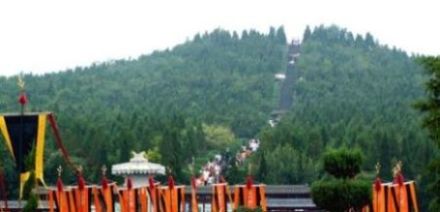
The first Qin emperor, Qin Shi Huang's, burial mound.
He said that Qin Shi Huang's tomb was looted and burned by General Xiang Yu about five years after the Qin emperor's death. The tomb complex burned in three months, he wrote.
Sima Qian told in Shijie, "As soon as the first emperor had become king of the country of Qin in 246 BC, the buildings and digging out were started at Mount Li. Qin Shi Huang was then thirteen years old. In the period after he had won the empire, more than 70,000 conscripted from all over the empire worked here. They dug through three subterranean streams and cast molten copper for the outer coffin, and the tomb was filled with models of palaces, pavilions and offices as well as precious vessels, a golden goose, precious stones and rarities. Craftsmen were ordered to set up automatic crossbows, so that any thief, who broke in, would be shot. All the rivers of the kingdom, the Yellow River and Yangtze were reproduced in mercury, with some mechanical means they were brought to flow out into a miniature ocean. As long as these streams would continue to flow, the emperor would exist in his underground world, according to Sima Qian. The heavenly constellations were at the top and the earthly regions below. The lamps were made from whale oil to ensure that they burned as long time as possible.
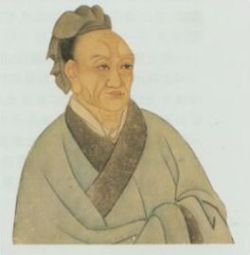
Sima Qian ca. 140 - 86 BC.
Sima Qian wrote about the coffin: "Below is copper and the outer coffin is fine" - Some concludes that the emperor rests in a coffin made of copper. - Further, he wrote about the coffin, "its interior is reinforced with molten copper, and its outer surface is covered by the "Agricere" (wax?). - It is "wrapped in pearls and jade" and "adorned with emeralds." - "The beauty of the coffin and the outer coffin's beauty surpasses the original." - Some believe that the outer coffin, therefore, must have been of wood.
Li Si, Qin Shi Huang's trusted first minister, wrote on the coffin: "A chisel will not bite, and flames will not burn. It gives a hollow sound when you knock on it, and it looks shapeless in the bottom."
Sima Qian continued: "The second emperor, Huhai, gave orders that all his father's childless wives and concubines were to follow him beyond and be buried alive together with him. After this had been done, an official told the new emperor that the craftsmen, who had worked with the tomb, knew too much about the tomb and its contents. When the first emperor was placed in the tomb and all the riches were put into place, suddenly the middle, lower and outer door were closed. Since all the doors were closed, none of the craftsmen, who stayed behind, got out again. Then they planted grass and trees on the grave, so it became to look like a small mountain.
The Qin dynasty left their indelible mark on China's culture and organization as a whole.
The pattern of the Beijing 2008 Olympic Torch can be found in Qin Shi Huang's clothing, which can also be found in the temple of the famous horse from Gansu, which also resembles the pattern in the temple of the Cherchen Man (mummy from Xin-Jiang). It suggests some cultural roots in a Central Asian "Middle world". All this suggests some cultural roots in a Central Asian "Middle Earth".
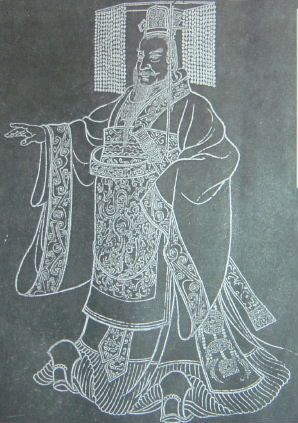

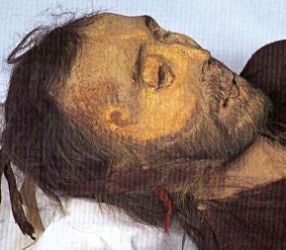
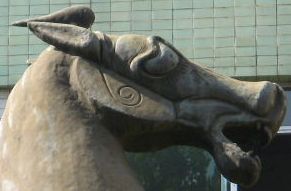
|
Left: An image of the first Qin emperor on a stone tablet. His attire is decorated with spiral patterns.
Mid: Torch for the Beijing Olympics 2008 with spiral patterns.
Upper right: The Cherchen man with a spiral-pattern painted on the temple.
Lower right: The horse from Gansu with a spiral pattern on the temple.
When walking around looking at Qin Shi Huang's terracotta soldiers' faces, one must admit that most look rather "Asian", except that they are pretty tall.
Only a few of the soldiers have heavy beard and eyebrows; they seem to be just barely as tall as the others. All the soldiers are quite different and may well represent the soldiers from different peoples of the vast empire.
The traditional pictures of the first Qin Emperor, Qin Shi Huang, shows a man en man with a well-developed nose and a rather heavy beard. It was said that he had a "leopard voice", which possibly means he had a powerful voice. He can well have been of at least partial Indo-European descent; his mother was a singer from the state of Zhou.
Below a Qin belt buckle found in Shaanxi. It represents an animal, a dragon or most likely a lion, apparently with several heads, who fights against a snake and bites it.
The almost identical motive can be seen on the big Jelling rune stone in Denmark, where an animal with four legs also is fighting a snake.
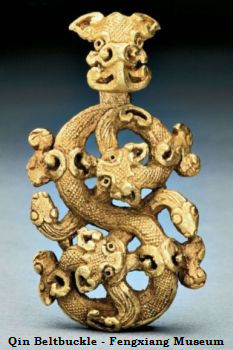
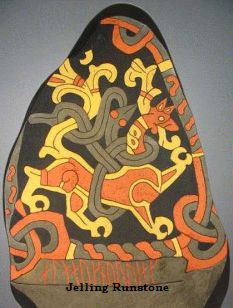
Left: Qin Belt buckle from Fengxiang Museum, Shaanxi Province - 6. til 5. century BC.
Right: The big Jelling runestone in Denmark with the motive marked in colors.
A similar scene can be seen in the details on the Oseberg Viking ship in Norway and on several places in the carvings on the wooden walls of the ancient Urne stave church also in Norway. There may seem little doubt that they come from similar cultures and same mythology.
A stone carving found in China from the third or fourth century BC (British Museum), showing two animals fighting against a snake and bite it, represents very much the same motif as that on the belt buckle, on the Norwegian stave church and on the Danish Jelling rune stone.
In the former Indo-European Asia Minor, a gold relief with a similar motive has been found. An animal, who looks like a dog or a wolf, fights against a snake and bites it (Hermitage St. Petersburg).
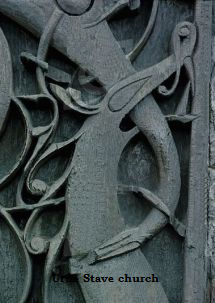
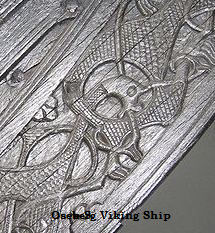
Left: Carvings on Urne stave church in Norway.
Right: Detail from the Oseberg Viking ship in Norway.
A similar motive, an animal who fights against a snake, has been found on a lid of a chest from Dulan in Qinghai Province in western China - It may be assumed that it has been made by the Tuyuhun people, which was a branch of the Xian-Bei people.
Also the Viking relief from Sct. Pauls churchyard in London shows an animal fighting one or more snakes, see below.
It is known that some of the peoples in the Western mountains used the lion as a heraldic animal, just as the Qi Dan people on the eastern steppe did. In later European heraldry, the lion was also a very popular motif. Therefore, I believe that it is likely that the animal fighting the snake must be understood as a lion. However, the artists had no idea what a lion looked like, they were just doing their best.
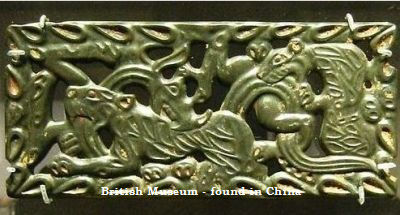
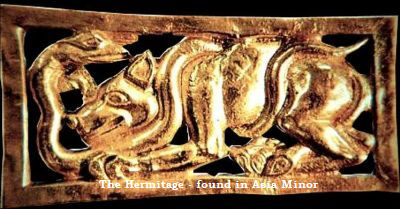
|
Left: Stone carving from 3. or 4. century BC found in China - British Museum.
Right: A little figure in gold - A dog or a wolf-like animal fights against a snake - The Hermitage St. Petersburg - found in Asia Minor.
The finding by the belt buckle and Indo-European words, which can still be recognized in modern Chinese, indicate that most of Gansu and large parts of Qinghai, Sichuan and Shaanxi were inhabited by various Indo-European tribes three thousand years ago, who spoke now extinct Indo-European languages akin with Tocharian - such as Yuezhi, who had lived in Gansu "always".
They may have lived in between other tribes as Xiong-Nu, Qiang, Di and Tibetan people.
In ancient time the Chinese knew that the Roman Empire existed. They called it "Da Qin", this means "Great Qin". So they must have thought, that there was a connection between The Qin people and the peoples of the West.
It is known from Qins own history, that some early Qin rulers
worshipped the "Great White Ruler - God of the West", as the peoples on the plains in the West did it. This god called for horse sacrifices, preferably white horses.
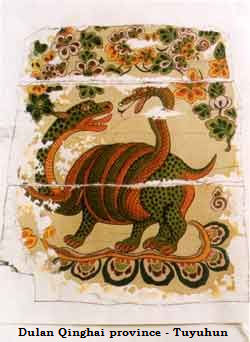
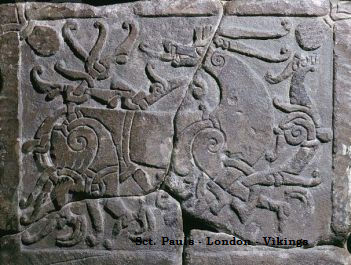
|
Left: An animal fighting a snake - painting on the lid of a chest - Dulan Qinghai province - the Tuyuhun Xian Bei.
Right: The Viking stone carving - The London animal- Skt. Pauls Churchyard in London
One of many rebels against the Qin, the founder of the Han Dynasty, Liu Bang, proclaimed the killing of a white snake as a sign of rebellion against Qin. According to the "Basic Annals", the white snake was the son of the "Great White Ruler - The God of the West" that some kings of Qin had worshiped.
Another classic writing, "Feng Shan Shu" explains the incident with the killing of the snake with that the son of the red emperor killed the son of the White Emperor. (Mentioned in the notes to the Three Kingdoms)
China's Political Unity
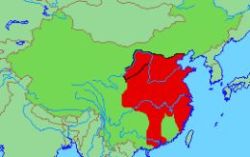
Due to Qin's conquest, China became one political entity, an empire, in contrast to Europe. The Qin rulers organized the country in 36 provinces, each headed by a civil servant and a military governor.
|
The Civil Servant System
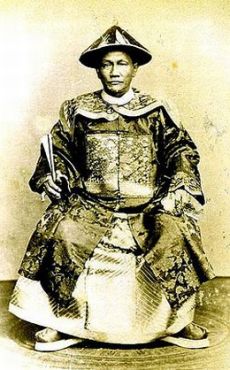
All nominal inborn rights were removed for good, and replaced by a civil servant system, the mandarin system, which since has been a characteristic of China.
|
Standards for Weights and Measures and more.
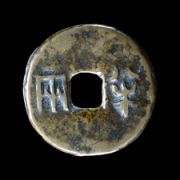
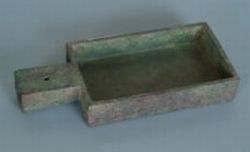
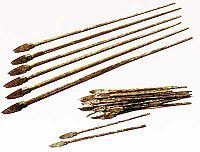
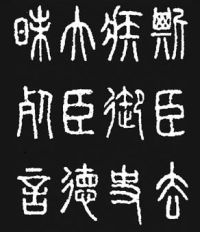
Coins, weights and measures, writing characters, calendar and laws became standardized throughout the empire. Army weapons, including arrows and crossbow mechanisms, were also standardized.
|
Construction of Roads all over the Empire
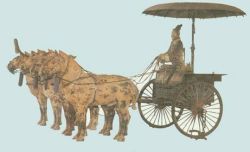
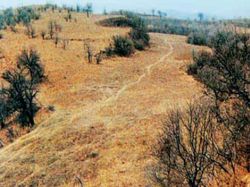
All parts of the empire were connected by a network of imperial roads, and the wheel distance of horse wagons was standardized.
|
Construction of Canals and Dams
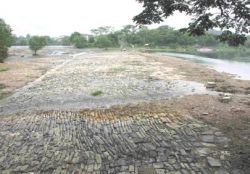

Qin carried out extensive canal and irrigation systems including the Zheng Guo Canal in Shaanxi, the Lingqu Canal between the Pearl River system and the Yangtze system in Guanxi and the Dujiangyan irrigation plant in Sichuan.
|
Building of the Great Wall
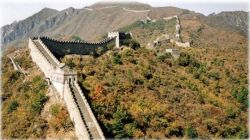
Qin connected the original states defensive dikes to the north into one continuous great wall.
|
Qin's Significance for China. The Qin Dynasty lasted only 15 years, but they forever changed China with comprehensive and dramatic reforms.
Liu Bang, the founder of the succeeding Han Dynasty, took over many of the Qin dynasty's rituals, also sacrificed white horses, like some early Qin rulers did.
In "Feng Shan Shu" the sacrifice of a white horse is mentioned by Wang Ling, who was an opponent of Empress Lu's plan to overthrow the Liu imperial family. Wang Ling, said: "The original (Han) Emperor
(Liu Bang), killed a white horse and proclaimed the general rule that if someone, who is not a member of the "Liu" clan, became king, then the whole kingdom had to attack him.
"If you (the Empress Lu) now allows anyone from the Lu clan to be king, you will violate this binding treaty." (Three Kingdom, notes, page 547)
Fire and the color red came to symbolize the Han dynasty. The same colors symbolized in the past the Zhou Dynasty. It is somewhat interesting that the banner color of modern Mao Dynasty also is red.
Qin's banner color was black ("Three Kingdoms" in the notes page 545).
According to Sima Qian, the Qin People originated from the southern part of the modern Chinese province of Gansu, from the area around the city of Tianshui.
It is said that King Feizi of Qin served as the horse keeper for the Emperor Xiao of Zhou Dynasty (about 1000 BC). For this service, he was rewarded with a Chinese princess and received an area in southern Gansu as a fief of the Zhou Emperor.
His new fief was surrounded by barbarian Rong tribes, some probably related to Yuzhi people, whom the much later Han Dynasty Chinese met in the upper part of Gansu. There were often clashes between Qin people and the neighboring tribes, just as there probably were battles between the tribes themselves.
"Rong" was the ancient Chinese's common name for all tribes around the Zhou Dynasty China, no matter what these people might call themselves.
In 771 BC some Rong tribes conquered Zhou Dynasty's capital, which was located near the modern city of Xian. The prince of Qin came to the rescue of the emperor and protected him during his escape to the east. Zhou dynasty established a new capital in Luoyang, and the Prince of Qin received the title of "Bo", Count. The count of Qin was promised that all previous Zhou Dynasty territory, which he retook from the Rong tribes, would belong to the Qin.
The following generations of counts of Qin worked diligently to expand their territory westward at the expense of the barbarian tribes. Therefore, a great proportion of the population in the country Qin must eventually have consisted of ethnic Rong people, who had accepted Chinese culture.
The other Chinese states looked down on the Qin people and regarded them as some simple barbarians. In the same way, as for example, the proper Greeks looked down at the Macedonians at the same time.
In more than three hundred years the Qin guarded the border against its Eastern neighbours, the Chinese states, while concentrating on expanding westward.
However, a coalition of Chinese states, led by the state of Wei, succeeded in 409 BC to cross the Yellow River and defeat the Qin seriously in battle. They carved out a large piece of the country of Qin.
In light of this serious national backlash, the Duke Xiao of Qin carried out radical reforms. He gathered international experts in political science and law in his court.
Under the leadership of the famous Shang Yang, all innate privileges of the nobility were abolished. Only those, who deserved it personally, were rewarded. The peasants got their own land and had to pay taxes directly to the king and the government.
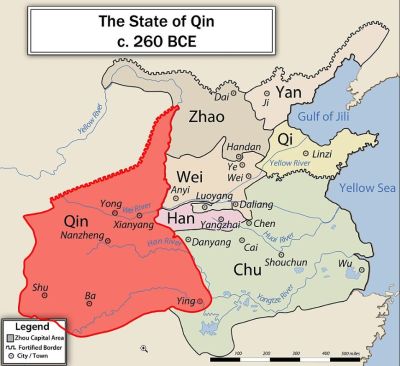
The land of Qin in 260 BC before the conquest of the other Chinese states in 221 BC. Photo Philg88 Wikipedia
From then on things went steadily forward for Qin. They developed a solid economic base in their backyard thanks to new big irrigation systems in Sichuan and along the Wei River. The new direct tax system also contributed to a much-improved economy.
Using this new economic strength, they could expand the army to an unprecedented size, which the other States could not match. The new peasants on their own land were the backbone of the army. One by one they conquered the six other Chinese states, until the country of Qi as the last one surrendered without a fight in 221 BC.
Qin united the original states of ancient China into one nation, an Imperial Empire, and that has generally been the case since.
After the victory, the leaders of Qin considered how they could consolidate their power.
The emperor's chief minister and adviser, Li Si, said: "I humbly suggest that all historical records, except Qin's, must be burned. If someone, who is not a scholar from the court, dares to keep the old songs, historical records or writings about the "hundred schools", those must be confiscated and burned by the provincial governor or military commander. Those who, in conversations dare to quote the old songs and records, should be executed publicly. Those, who use the old customs to struggle against the new order, must have their families wiped out, and officials who know of such cases, but fails to report them, should be punished in the same way."
"If the owners of these books, thirty days after issuing of this order, still did not have them destroyed, they must be tattooed on their faces and sentenced to hard labor on the Great Wall."
"The only books that do not have to be destroyed are those, who are on medicine, predictions of the future and agriculture. Those, who wish to study law, can learn it from the officials."
The emperor's eldest son, Fusu, asked for mercy for the Confucian philosophers, against whom this proposal was directed. But it was vain, he achieved only to be de facto detained to the military department, who supervised the work on the Great Wall.
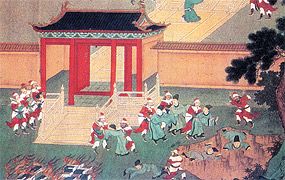
The Confucian philosophers being buried alive and their books burned.
Some hundred historians and philosophers from the conquered countries were then buried alive or stoned to death, and all their books were burned.
The Qin State hailed "legalism", a sort of political ideology, which, since the major reforms under Duke Xiao and Shang Yang had brought them such success. Legalism was a set of theories about the government of the state, which stood in direct contrast to Confucius' ideas. The Legalists put the interests of the state above everything, they gave nothing for the virtue and justice, as a ruler should possess according to Confucius. The legalists put state interests above morality and justice, above everything else. People had significance only to the extent that they served the state.
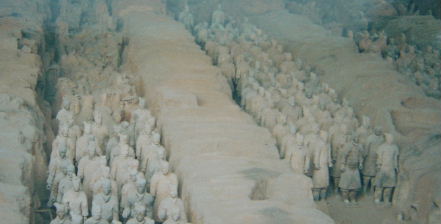
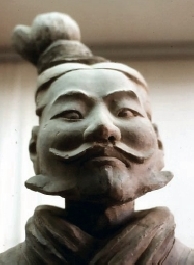
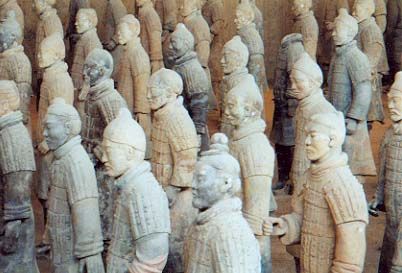
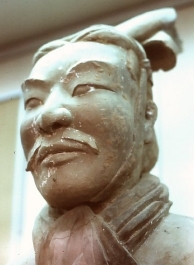
|
Top left: The Qin the emperor's terra cotta soldiers.
Top right: A terra cotta soldier with whiskers.
Below left: Qin Shi Huang's terracotta soldiers are all different.
Below right: A terra cotta soldier with a mustache.
Duke Xiao's first prime minister Shang Yang expressed the legalistic ideas like this: "Clever men make laws, stupid men feel restricted by them. Worthy men change the rituals, unworthy men are only clinging to them."
The Legalists believed that man is selfish and egoistic and can only be controlled by strict laws. Therefore Qin's laws were unusually harsh.
Shang Yang wrote: "By measuring out punishment, small offences must be severely punished; if small offenses do not take place, then big offenses will not occur. - The punishment should not depend on position, but from prime ministers and generals down to senior officers and ordinary people, everybody, who do not obey the king's commands, violates the rules of the state or rebel against statutes that have been set by the ruler, must be punished by death and must not be pardoned."
The Qin people were disciplined to such an extent that makes Frederick the Great and his Prussians appear as a misbehaved seventh grade. After a lost battle, all the surviving officers were executed. For the higher classes it was not necessary to execute anybody, they were simply ordered to commit suicide.
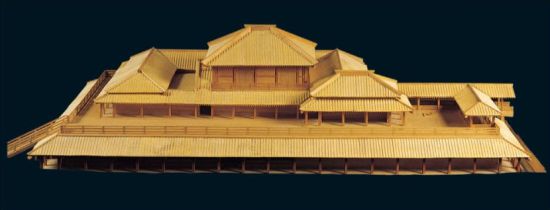
Model of Qin's imperial Epang Palace - Xianyang Municipal Museum.
For example, Qin Shi Huang's eldest son, Fusu, was sent a fake letter with his father's stamp, ordering him to commit suicide, which he did. His friend, General Meng Tian, received a similar letter but refused to follow the suicide order. He was accused of insubordination and was executed along with his entire family.
At the foot of Qin Shi Huang's burial mound, a mass grave was found, with, what some assume, the remains of the imperial tomb builders. They had just been thrown into the grave, pell-mell. A newspaper wrote that these skeletons had been surveyed, and it was determined that some of them were caucasian types.
For Qin persons, it must have been nominally an honor to follow their king in death, though perhaps not all the followers were equally enthusiastic. One might ask whether then, it is likely that the bodies of deads were treated so carelessly. It is more likely that the insurgent General Xiang Yu had captured some surviving Qin persons, executed them and dumped them into a hole.
If this is the case then the skeletons in the mass grave show that the Qin must have been a people of partial Causasian descent.
The rebellious General Xiang Yu destroyed and burned Qin's imperial Epang palace and Qin Shi Huang's tomb complex, Sima Qian wrote. Both burned for several months thereafter. He executed the third Qin emperor and his entire family. It is well known that Xiang Yu killed all of the Qins, he could get hold of. Other rebel armies probably also did so.
|
Nine major enigmas of Qin Shihuang Mausoleum 5 guesses on Emperor Qin Shihuang's tomb Guo Zhikun The illuminated Lantern - Qin Dynasty Workers from the West - Archaeology Online Professor Victor Mair Qin (state) Wikipedia A thank to the website "China History Forum" - which unfortunately is not among us anymore - for information and inspiration. |
| To top |